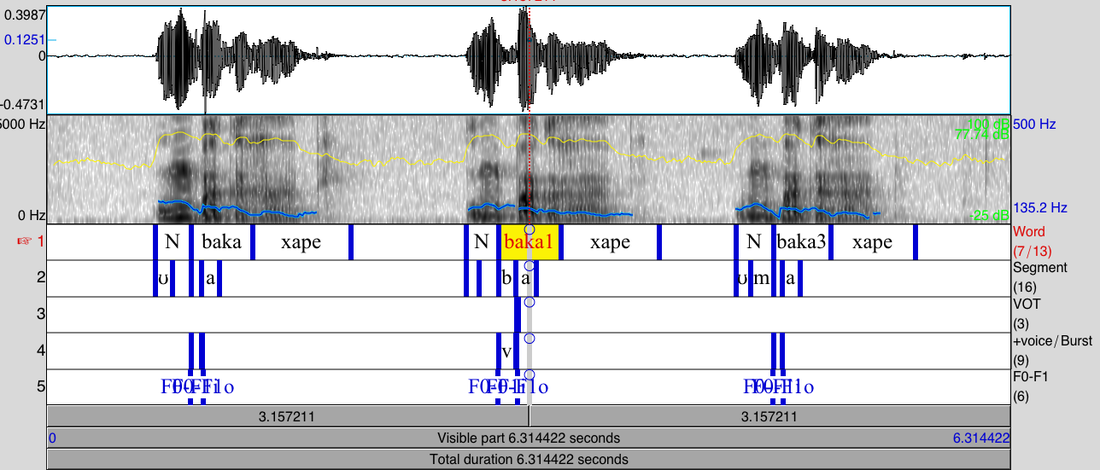


The pitch correlates of tones are relatively easy for Praat to identify, as its instrumentally observable correspondence is the fundamental frequency (F0) of a sound. Register languages are found throughout South-East Asia. Languages for which pitch is not the overall primary acoustic correlate of tone are often called 'register' languages. Burmese), jitter, shimmer, creakiness, or length.

There are also languages for which the primary acoustic correlate of tone (or some tones) is not pitch, but rather voice quality: glottalization (i.e. Asian languages tend to have contour tone: this means that across the tone-bearing-unit (TBU) the pitch may rise or fall. African languages tend to have register tone: this means that pitch height (measured in frequency, often by Hz) is the primary acoustic correlate of tone in these languages. The major tone types are 'register' and 'contour' tones - often languages will be categorized as having one or the other, but some have both types. Another important piece of information to remember is that there are quite a few different kinds of tone languages. Tone has a lot of similarity to pitch as used in music, which is why tones often seem to 'disappear' or be relatively unimportant in songs sung in languages that otherwise have tone (like Mandarin). In linguistics, this is a "suprasegmental" feature, which essentially means that it occurs in parallel with the phonetic segments of speech created by the movement of articulators (tongue, mouth, etc.) of the human vocal apparatus. In this post, I use the word 'tone' to refer specifically to pitch that is used in a language at the word or morpheme level to indicate a difference in meaning from another word (or words) that are otherwise segmentally identical. But regarding tone, while Praat can easily identify and measure tone, there are no comprehensive scripts that help a linguist to instrumentally investigate tones in a systematic way.
#Praat script compute f0 statistisc series#
While not part of the series of posts I've been working on describing my tools and workflow, this particular script is a recent tool that I've developed for analyzing and exploring tonal patterns.Īs I noted in my post on Praat scripting, the Praat program gives linguists a relatively easy way to investigate the properties of speech sounds, and scripts help to automate relatively mundane tasks.
#Praat script compute f0 statistisc update#


 0 kommentar(er)
0 kommentar(er)
